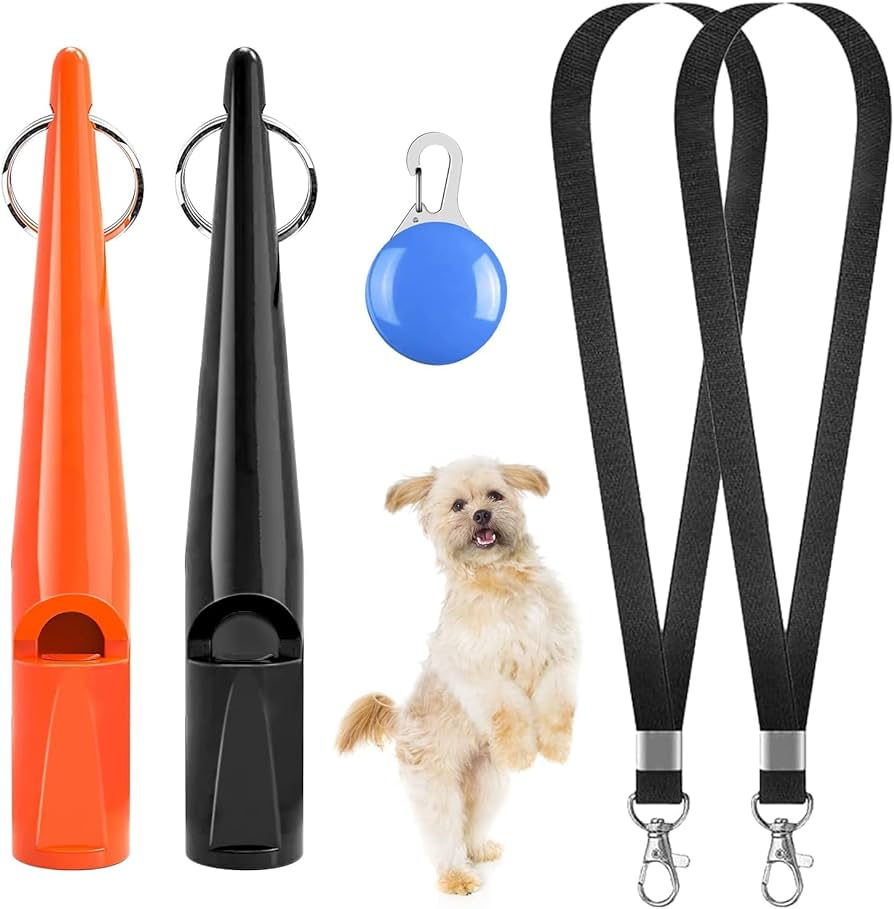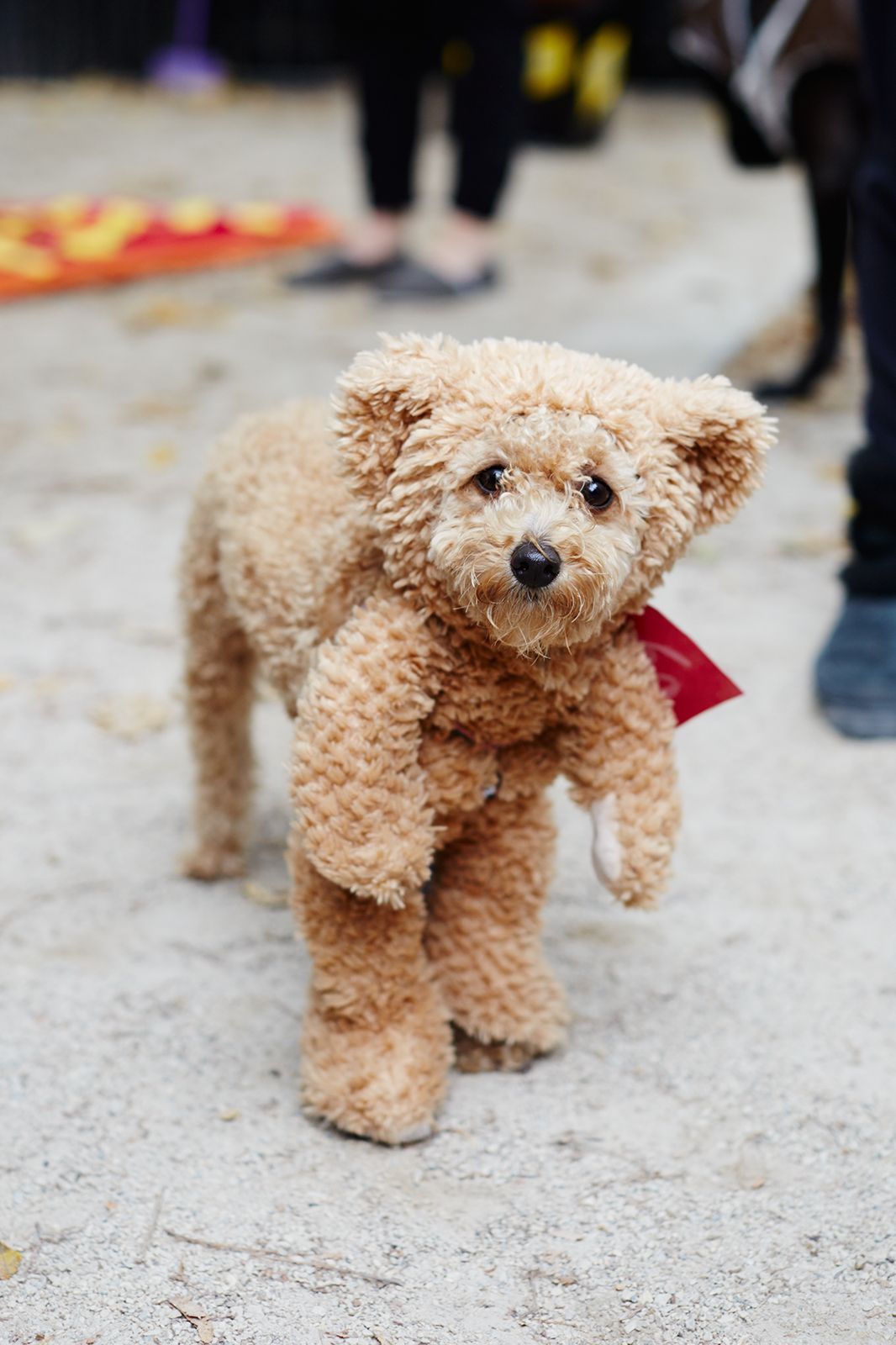Dog owners often seek effective ways to communicate with their furry companions, and one such tool is the dog whistle. In this comprehensive guide, we will delve into the world of dog whistles, exploring their history, functionality, training techniques, and more. If you're eager to unlock the silent language of canines, read on.

What is a Dog Whistle?
The origins of the dog whistle can be traced back to the early 1900s when it was invented by Francis Galton. This device operates on ultrasonic frequencies that are beyond the range of human hearing, making it an ideal tool for canine communication.
How Does It Work?
A dog whistle emits a high-pitched sound that dogs can hear clearly due to their acute hearing abilities. These whistles come in various frequencies, allowing for customization to suit different dog breeds and training needs.

Why Use a Dog Whistle?
Dog whistles serve as an indispensable tool for effectively training your dog. They offer an exceptional way to communicate clearly and consistently with your canine companion, something that is essential for a successful training regimen.
Conventional vocal commands can often be ambiguous due to variations in pitch, tone, or emphasis. In contrast, a dog whistle produces a uniform sound, removing any room for confusion. This makes it easier for your dog to associate specific whistle signals with particular actions or behaviors.
Furthermore, dog whistles operate at frequencies that are particularly sensitive to a dog's hearing range. This allows your pet to hear the whistle's sound from a distance, making it a useful tool for training in open spaces. Whether you're working on recall, teaching obedience, or reinforcing good behavior, the consistency offered by a dog whistle ensures that the message you're sending is unambiguous.
By utilizing a dog whistle in your training sessions, you're leveraging a method that is both humane and effective. You can easily capture your dog's attention, guide them through different commands, and positively reinforce the behaviors you wish to see more of—all without raising your voice or resorting to punitive measures. Thus, a dog whistle is invaluable for creating a harmonious relationship between you and your canine companion, making training an enjoyable and rewarding experience for both.
Recall and Safety
One of the primary uses of a dog whistle is to ensure your dog's safety by training them to come back to you promptly, even at a distance where your voice may not carry.
Choosing the Right Dog Whistle
Here are some of things you should consider while choosing the whistle for your dog.
Frequency
Selecting the right frequency for your dog's whistle is crucial. Different breeds respond better to specific frequencies, so it's essential to do some research and choose accordingly.
Material and Durability
Consider the materials used in the construction of the whistle. It should be durable and withstand outdoor conditions, as many training sessions happen in the great outdoors.
Adjustable vs. Fixed Frequency
Some whistles offer adjustable frequencies, while others are fixed. We'll explore the advantages and disadvantages of each to help you make an informed decision.
Training Your Dog with a Whistle
Training your dog with a whistle is a strategic process that requires patience, consistency, and a deep understanding of how this tool works. By mastering the art of dog whistle training, you can foster obedience and refine your pet's behavior effectively.
Basic Commands
Begin your dog whistle training journey with fundamental commands such as "sit," "stay," and "come." These commands form the foundation of communication between you and your dog. Here's how to do it:
- Start with a Calm Environment: Ensure you and your dog are in a quiet, distraction-free area.
- Choose a Distinct Whistle Signal: Assign a specific signal to each command. For example, one short blast for "sit," two for "stay," and three for "come."
- Repetition and Reinforcement: Practice the commands consistently, rewarding your dog with treats or praise when they respond correctly.
Advanced Training
Once your dog has mastered the basics, you can advance to more complex training using the dog whistle. This stage allows you to address specific behavioral issues or teach advanced tricks. Here are some tips:
- Maintain Clarity: Ensure your whistle signals remain clear and distinct, so your dog doesn't get confused.
- Gradual Progression: Take training one step at a time, gradually introducing new commands and challenges.
- Use Positive Reinforcement: Continue to reward your dog for correct responses, reinforcing desired behaviors.
- Monitor Progress: Keep track of your dog's progress and adjust your training methods as needed.
Remember that advanced training with a dog whistle requires dedication and patience, but the results can be highly rewarding.
Common Mistakes to Avoid
Avoiding common mistakes in dog whistle training is vital to ensure both you and your dog have a positive experience. Here are some pitfalls to steer clear of:
Overblowing the Whistle
One of the most prevalent errors in dog whistle training is overblowing the whistle. This can lead to two main problems:
- Hearing Damage: Overexposure to the high-pitched sound of the whistle can harm your dog's sensitive ears. Use the whistle judiciously to protect their hearing.
- Confusion: Excessive blowing can confuse your dog, making it difficult for them to discern between different commands. Stick to clear, concise signals.
Inconsistent Signals
Consistency is paramount in dog whistle training. Inconsistent signals can undermine your efforts by confusing your dog and hindering progress. Here's how to avoid this mistake:
- Set Clear Signals: Ensure that each command has a distinct and unchanging whistle signal. Don't switch signals arbitrarily.
- Coordinate with Family Members: If multiple people are involved in your dog's training, ensure everyone uses the same signals and commands.
- Practice Regularly: Consistent practice reinforces your dog's understanding of the signals. Skipping sessions can lead to confusion.
By sidestepping these common errors, you can maximize the effectiveness of your dog whistle training and enjoy a harmonious relationship with your four-legged companion.

Benefits of Using a Dog Whistle
Using a dog whistle as a training tool offers a multitude of benefits that can transform your canine-human relationship. This section outlines the advantages of incorporating a dog whistle into your training regimen.
Precision and Clarity
One of the foremost benefits of a dog whistle is its unparalleled precision and clarity in communication. Unlike verbal commands, which can be muddled by tone and volume variations, a whistle emits a consistent, sharp sound that leaves no room for ambiguity.
- Eliminates Misunderstandings: Dogs easily distinguish the unique sound patterns of the whistle, reducing the chances of misinterpreting commands.
- No Language Barriers: The beauty of a dog whistle lies in its universality. It transcends language barriers, making it an ideal tool for training dogs from diverse backgrounds.
Long-Distance Communication
Dog owners often find themselves in situations where their voice simply doesn't carry far enough. Whether your dog is chasing a squirrel in the park or exploring the wilderness, a dog whistle bridges the gap.
- Enhanced Recall: A well-trained dog will respond to the whistle's signal from considerable distances, ensuring they return promptly to your side.
- Safety: In emergency situations, such as when your dog is about to enter a hazardous area, the whistle can be a lifesaver. Its audibility reaches farther than your voice, allowing you to convey critical commands effectively.
Consistency in Training
Consistency is a cornerstone of effective dog training, and the dog whistle excels in this regard.
- Uniform Signals: The whistle emits the same sound each time, eliminating variations that can confuse your dog.
- Strengthened Training Bonds: By using a consistent tool, you build a stronger training bond with your dog, reinforcing trust and reliability.
Reduced Vocal Strain
Constantly shouting commands can strain your vocal cords and become tiresome. A dog whistle provides a much-needed respite for your voice.
- Preservation of Vocal Health: By using a whistle, you can save your voice from unnecessary strain, allowing for more effective communication in the long run.
Precision Targeting
Dog whistles offer the unique advantage of precise targeting during training.
- Isolate Specific Behaviors: With a well-tuned whistle, you can pinpoint individual behaviors for correction or reinforcement.
- Fine-Tune Training: Adjust the whistle frequency to fine-tune your dog's responses, ensuring they meet your exacting standards.
Consistent Training Across Handlers
If multiple family members or trainers are involved in your dog's upbringing, a dog whistle ensures everyone is on the same page.
- Unified Training: Whistle signals are standardized, preventing confusion when different handlers are involved in training.
In conclusion, the benefits of using a dog whistle in training are clear and compelling. The precision, consistency, and versatility it offers make it an indispensable tool for dog owners seeking effective communication and obedience from their four-legged companions. Incorporating a dog whistle into your training toolkit can lead to a more harmonious and rewarding relationship with your beloved pet.
Limitations of Dog Whistles
1. Limited Audibility: Understand the limitations of dog whistles, including their reduced effectiveness in certain situations.
2. Training Time Investment: Training your dog with a whistle requires time and patience. We'll discuss the commitment involved in this training method.
Tips for Effective Dog Whistle Training
Effective dog whistle training requires more than just the instrument itself; it demands a strategic approach and a deep understanding of canine behavior. Here are essential tips to ensure your dog whistle training is successful and productive.

Start Early
Commence dog whistle training as early as possible in your dog's life. Puppies are like sponges, absorbing information and habits rapidly. By introducing the whistle early, you lay the foundation for effective communication.
- Early Habituation: Puppies are more adaptable and less set in their ways, making it easier for them to adjust to new training methods.
- Lifelong Skills: Early training ensures that your dog carries these skills throughout their life, making obedience a consistent part of their behavior.
Consistency is Key
Consistency is the linchpin of successful happy dog whistle training. Dogs thrive on predictability, and your whistle signals should be constant.
- Clear Signals: Ensure that each command has a distinct, unchanging whistle signal. Avoid switching signals arbitrarily.
- Regular Practice: Consistent, daily practice reinforces your dog's understanding of the signals and solidifies their response.
Positive Reinforcement
Positive reinforcement is a potent tool in dog training, including whistle training. Reward your dog generously when they respond correctly to a whistle command.
- Treats and Praise: Use treats, interactive dog toys, praise, and affection as rewards when your dog obeys a whistle command. Positive experiences reinforce desired behaviors.
- Timing Matters: Be timely with your rewards. Immediately follow the correct response with positive reinforcement to strengthen the association.
Patience and Persistence
Dog whistle training may require time and patience. Not all dogs learn at the same pace, and some behaviors may take longer to master.
- Avoid Frustration: Keep your training sessions upbeat and avoid becoming frustrated if progress is slower than expected.
- Incremental Progress: Break down complex behaviors into smaller, manageable steps, celebrating each success along the way.
Maintain Focus
During training sessions, maintain your dog's focus on you and the task at hand. Minimize distractions to maximize the effectiveness of your whistle commands.
- Select Quiet Environments: Start training in quiet, familiar settings before progressing to more challenging environments.
- Limit External Distractions: Remove potential distractions, such as other pets or noisy surroundings, during training sessions.
Adapt to Your Dog
Every dog is unique, and their response to whistle training may vary. Pay close attention to your dog's signals and adjust your training approach accordingly.
- Tailor Training: Modify your training methods to suit your dog's temperament, energy level, and individual needs.
- Stay Attuned: Watch for signs of stress or discomfort during training, and make adjustments to ensure a positive experience.
By adhering to these tips, you'll be well-equipped to embark on a successful dog whistle training journey. Patience, consistency, and positive reinforcement are your allies in fostering obedience and building a harmonious relationship with your canine companion.
Alternatives to Dog Whistles
Here are some of the alternatives to dog whistles.
1. Clickers: Explore clicker training as an alternative to dog whistles and understand its pros and cons.
2. Voice Commands: Learn about using voice commands as an alternative or complementary approach to dog whistle training.

Safety Considerations
1. Protecting Your Dog's Ears: Discover how to protect your dog's sensitive ears while using a dog whistle.
2. Respectful Training Practices: Understand the importance of respectful and humane training practices when using a dog whistle.
Conclusion
In conclusion, a dog whistle is more than just a simple accessory; it's a potent instrument for fostering clear and effective communication between you and your four-legged friend. Armed with a nuanced understanding of its history, the mechanics behind its functionality, and the best practices for its use, you are well-equipped to tap into this silent yet profound language. This not only empowers you to cultivate a more obedient and responsive pet, but it also fortifies the unique bond you share with your canine companion. Utilizing a dog whistle elevates the training experience, transforming it into a harmonious dialogue rather than a one-sided set of commands. So go ahead, make the most of this incredible tool to fully unlock the limitless potential within your canine relationship.
FAQs
1. Can any dog be trained with a whistle?
Yes, most dogs can be trained with a whistle, but the success of training may vary based on individual temperament and breed.
2. What frequency should I choose for my dog's whistle?
The ideal frequency depends on your dog's breed and hearing capabilities. Research the frequency ranges that suit your specific breed.
3. Is dog whistle training cruel?
When used correctly, dog whistle training is not cruel. It provides clear and effective communication with your dog.
4. Are there silent dog whistles?
Yes, silent dog whistles emit ultrasonic sounds that are inaudible to humans, making them an excellent choice for discreet training.
5. How long does it take to train a dog with a whistle?
The time required for dog whistle training varies depending on the dog's age, previous training, and the specific behaviors you're addressing. Patience and consistency are key.
In this comprehensive guide, we've uncovered the world of dog whistles, their history, applications, and best practices for training your canine companion. Whether you're a seasoned dog owner or a novice, the silent language of dog whistles can become a powerful tool in your training arsenal. So, why wait? Access the link above and embark on a journey to enhance your bond with your furry friend.

